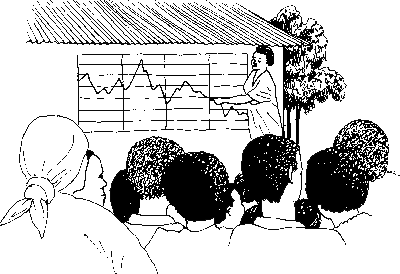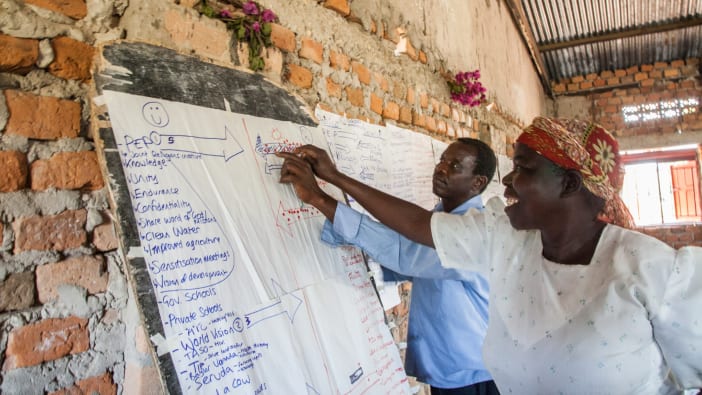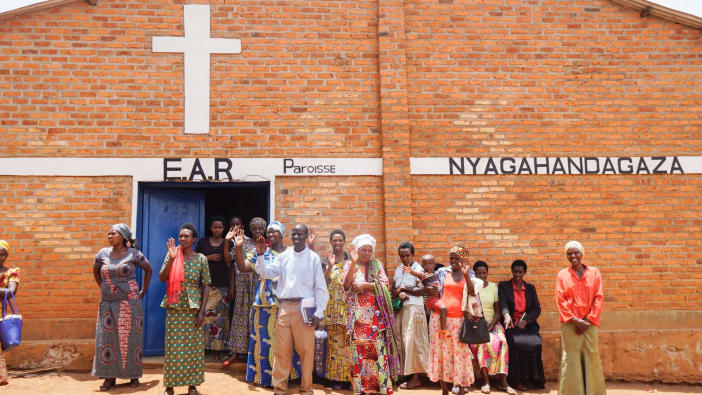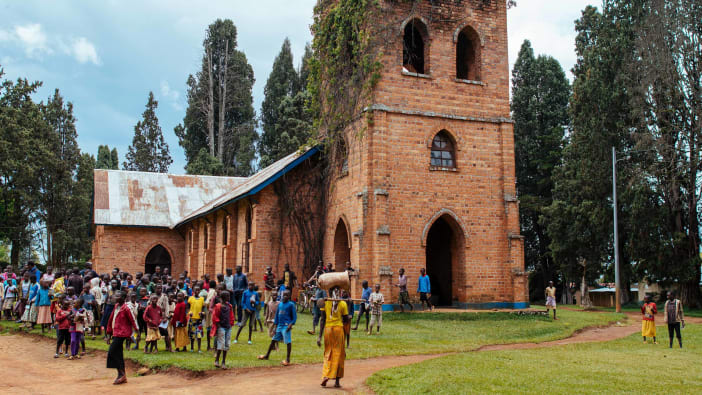All change builds on what has gone before. It is helpful for a community to reflect on the changes that have already occurred and what has been learned from them. One very useful way to help discussion about this is to produce a ‘community timeline’.
A timeline is a way of looking back and recording how things were and how people have felt over time. Sometimes this is called a ‘line of well-being’. Agree on a start date – usually a particular time within the memory of most people present, maybe around 10 years ago. Together, remind each other of important events – a time of drought, or the opening of the school or clinic. How was life at that time for people here? Give an example of how to carry out the exercise. As with the maps, work in small groups so that each group draws a timeline. Then discuss each timeline to enable people to get a complete picture of the recent history of their community.
Discussion
- Discuss the meaning of the different levels of well-being. ‘Very good’ measures a time when people feel positive, have money for food and essentials or are excited about the future. ‘OK’ means that life is generally all right – not too good but not too bad. ‘Very bad’ means that people find it very difficult to manage, have little or no money and little hope for the future. In between these three measures are a wide range of levels.
- Discuss whether to work in small mixed groups or to form groups according to age and gender.
- Discuss whether to encourage people to let their timeline finish at today’s date or a date in the future. Do people want to consider how they feel about the future?
- Did people have enough time to finish? How similar were the different timelines? Were there many differences? What can be learned from each of these?
- How can this information be kept safe to look at in the future? Can timelines drawn on the ground be copied onto paper? Who should look after the timelines?
- How can we hold on to what we are learning together?










